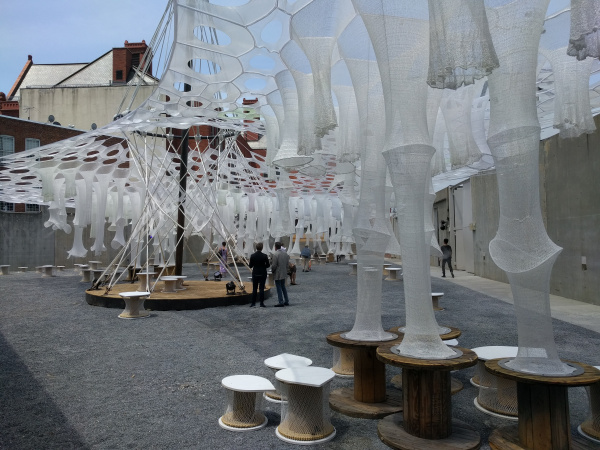 Was I going to be the one, finally, to free Yvan Cournoyer to be his own true exuberant self, swerving in off the right wing to jam the puck past Suitcase Smith in the Vancouver net?
Was I going to be the one, finally, to free Yvan Cournoyer to be his own true exuberant self, swerving in off the right wing to jam the puck past Suitcase Smith in the Vancouver net?
I always thought I was. Even now, today, put me in front of a tabletop hockey game and I’ll be working those rods with same desperation as I did as a seven-year-old. Shunting those damned rods forward to shift those tin wingers down their little rink-grooves as though I could force them to finesse as the puck that wasn’t even a puck skittered away to that dead spot behind the net that was out of range for every player on the not-ice.
And still, as it was back in the rec room, I’m always only ever a flicker of the wrist away from alchemizing all that shoving and ricocheting into actual stickhandling and deking.
This is going back to the early 1970s when I first took up at table-hockey in the basement in Peterborough, Ontario. I was — six? seven? My older brother wouldn’t play, wasn’t interested. I probably volunteered my sister to duty, but she would have been too young to appreciate the responsibility involved in pushing around her Don Levers and Bobby Schmautzes with serious enough intent to make the game worth my while.
So it would have been up to my parents. They were patient if not always entirely willing. I was — obviously; always — Montreal.
Donald Munro started it all, table-hockeywise. That’s the story. In Toronto, 1932, in the dimlit Depression, he built the first mechanical hockey game as a Christmas present for his children. Coathangers and butcher’s twine figure into the telling, lumber cadged from coalbins. Then Munro built more, sold them at Eaton’s. It was more of a pinball affair in those years, with a flipper standing in for Charlie Conacher on the wooden wing, a ball-bearing pretending to be a puck.
By the time I got my Munro in the early 1970s, the game had developed without really having evolved. For all the molded plastic and bright NHL colours, the aesthetic was still fairly coathanger. I did love the flat simplicity of the players, even though, disappointingly, none of their grinning faces resembled any of the Canadiens I knew from TV. I was fond of the tiny nets, too, which I’d unmoor and carry with me, sometimes, just in case.
My Munro was a basic model, I think. The old ads I’m looking at show the Bobby Orr edition (regularly priced in 1972 at $29.95) and the Bobby Hull ($16.95). I don’t know that mine was Bobby-branded, though. The “working scoretower with puck-dropper” on the basic Coleco ($11.97) sounds familiar. “Pass, shoot, block and check — complete hockey fun,” the Munro ads promise; “over 1,000 square inches of exciting, action hockey.”
It wasn’t, though, was it? Yes, okay, I’ll accept there, from the physics point of view, that there was plenty of action. I’ll allow that there was much blocking and even, why not, the many inches — but there was never any hockey to the thing. No ice, no skates, nothing approximating a deke or shot, no rules, no penalties, no saves by the goalies. It was slow, rhythmless, much interrupted. It was only like hockey insofar as you could bring your imagination to bear to conjure Cournoyer and Lemaire and Dryden doing what they did and you couldn’t. There was risk in that, too, though: watching the actual Habs on Hockey Night in Canada, I’d find myself muttering at flesh-and-blood #29 for the 16 soft goals he’d allowed down in the rec room. Some of them, he’d hardly even moved.
I’m not saying it wasn’t fun. Frustratingly, and for hours and hours, it was fun.
Michael Winter played in Corner Brook, Newfoundland. He grew up there, and goes back. A couple of years ago when he was home he quarried out his old Munro, packed it up, flew it to Toronto. Now he and his son now sometimes carry on in the cause of trying to emancipate those poor old wingers.
I e-mailed Winter when I saw this painting of his. Pretty sure this is the same model I had in Peterborough, I wrote, the one where the puck slotted so pleasingly into the top of the gondola before, after a moment, dropping in for the opening face-off.
He wrote back:
I’m astonished at how my old instincts and training have kicked in, defeating the youngster with passes using finger-twirl muscles I haven’t activated in forty years.
I believe it’s a Munro 1974 model, though I could be off a year or two.
It comes with four teams: Toronto, Montreal, Vancouver, Buffalo.
Yes, it has that very satisfying drop of the puck from gondola.
I found it under the stairs in the basement last time I went to Corner Brook.
Air Canada managed to break a corner of it during transport to Toronto, but I’ve patched it. Serge Savard, when he’s digging out the puck, says he doesn’t mind.
Read Winter’s book Into The Blizzard: Walking The Fields of the Newfoundland Dead, I suggest. For scores and updates, find him on Twitter @michaelwinternet34 , or (and) on Instagram, @michaelwinternet.
Share this:
- Share





